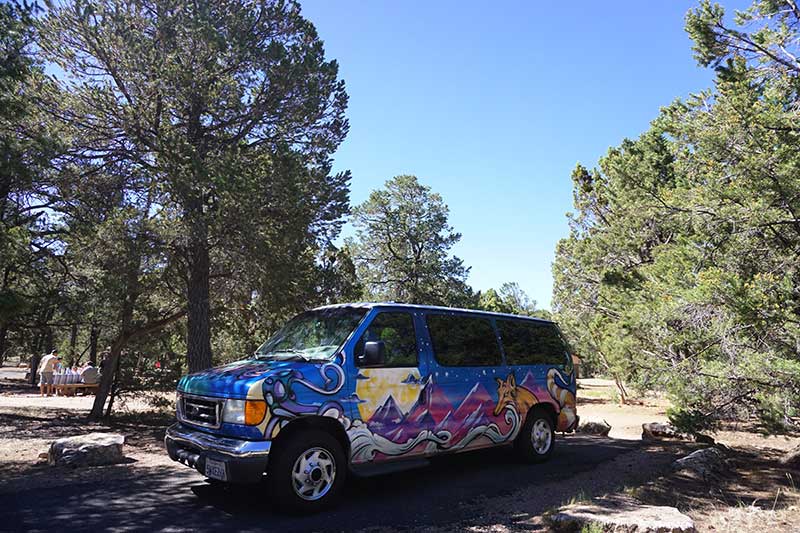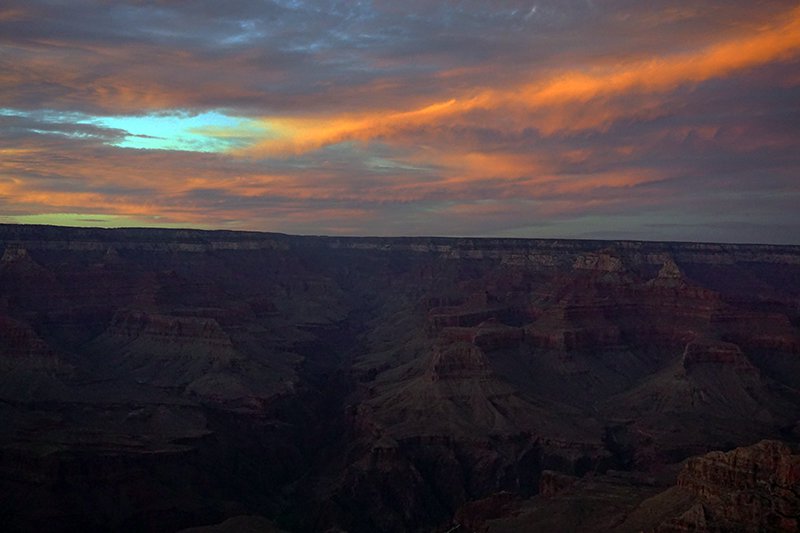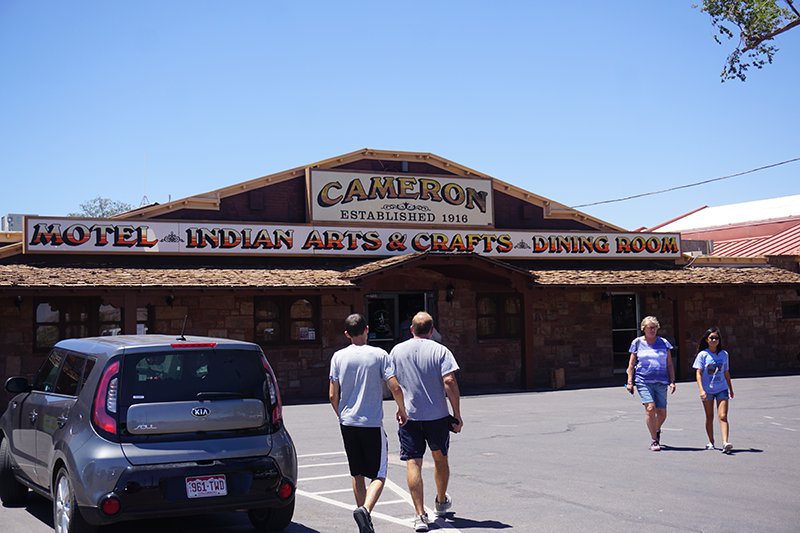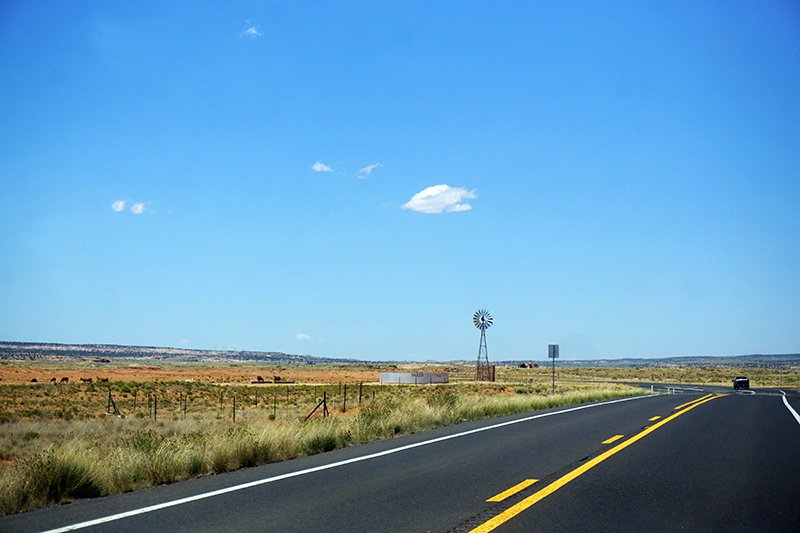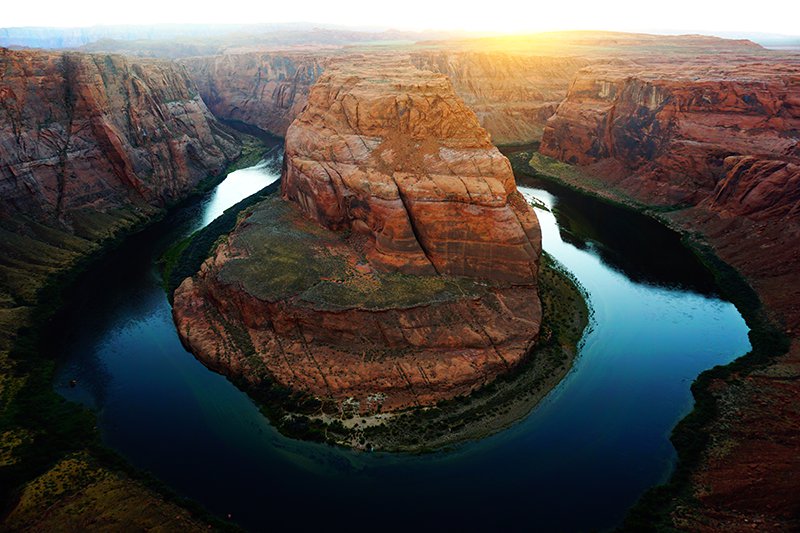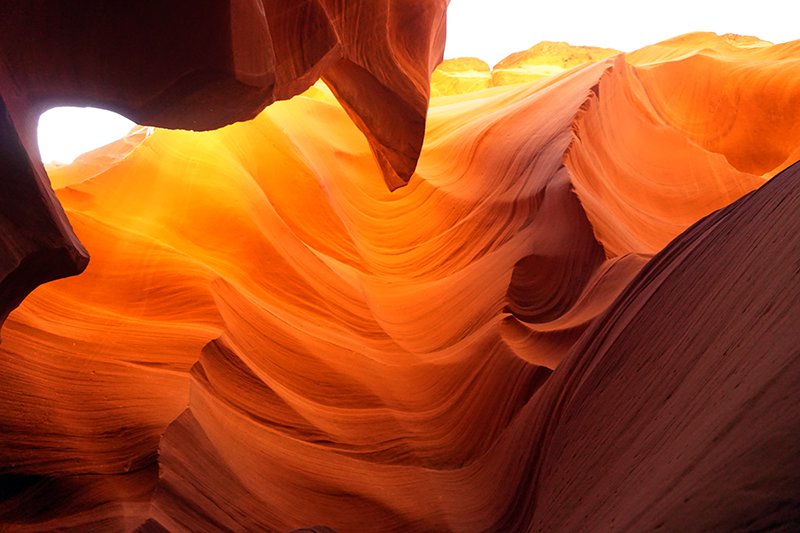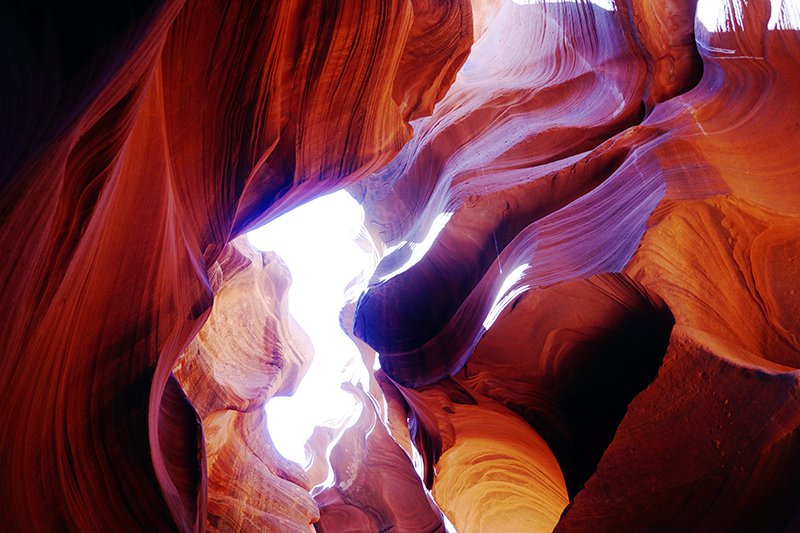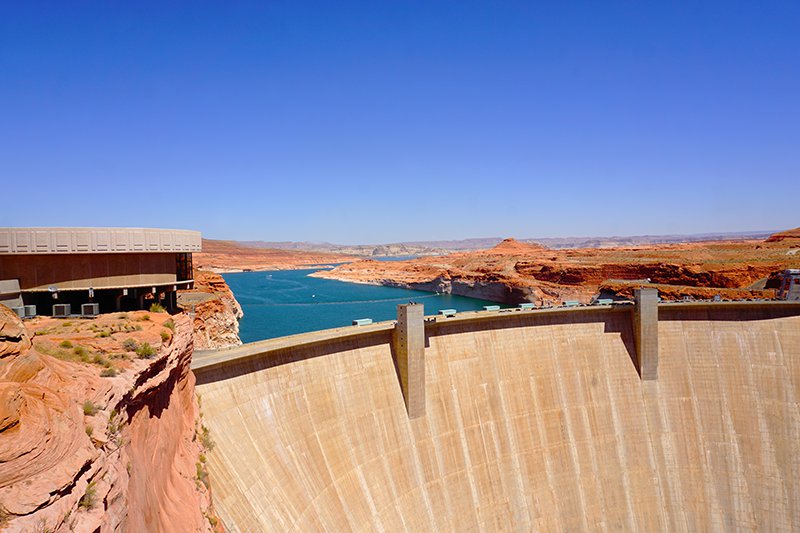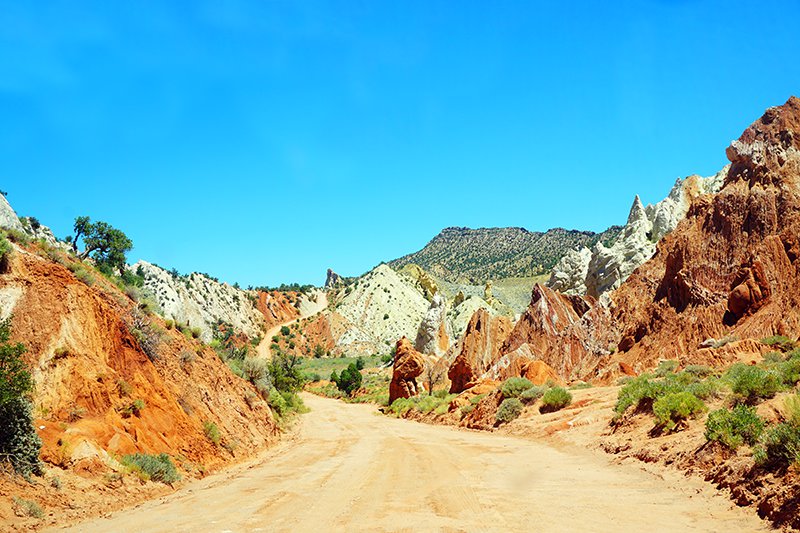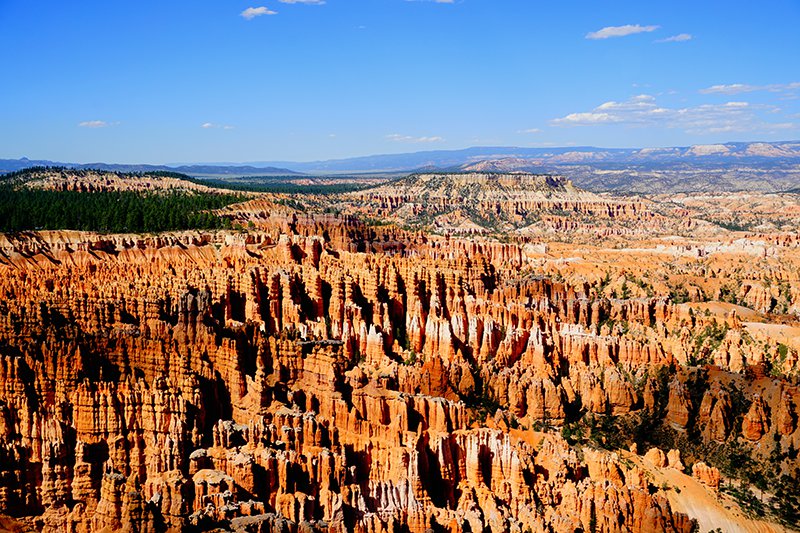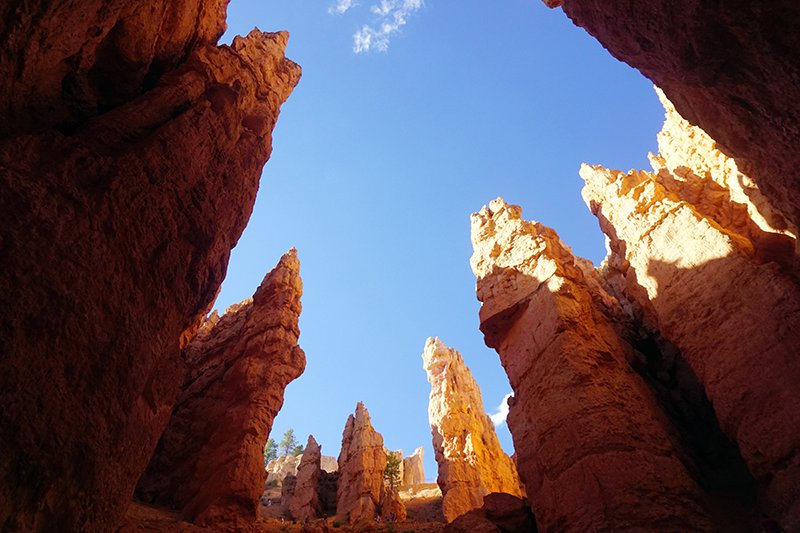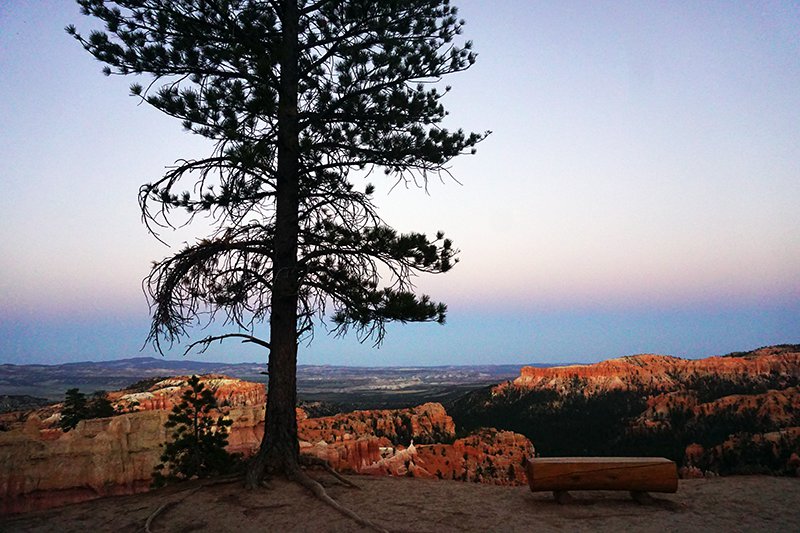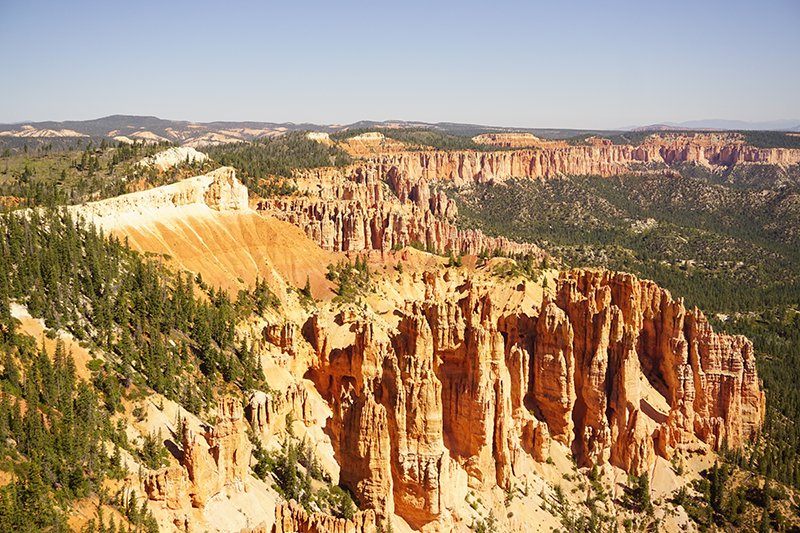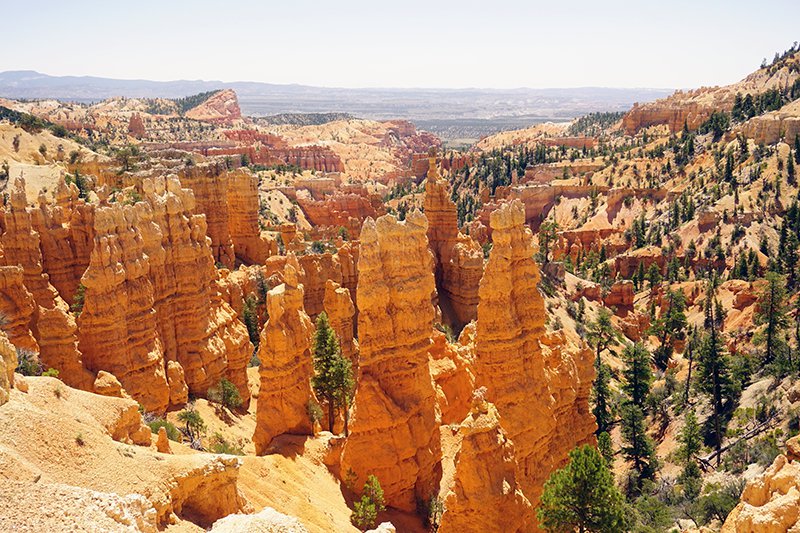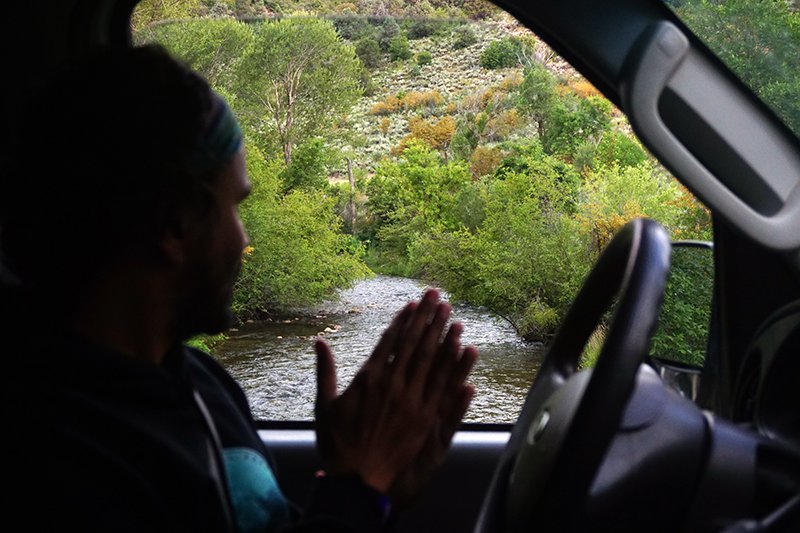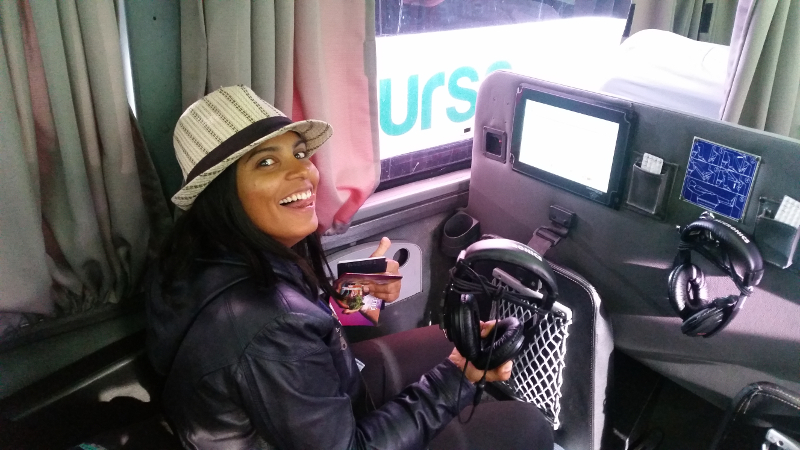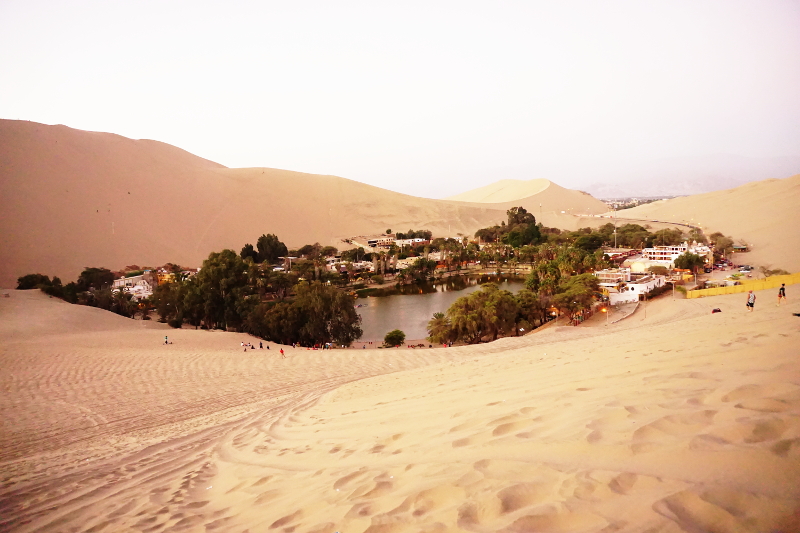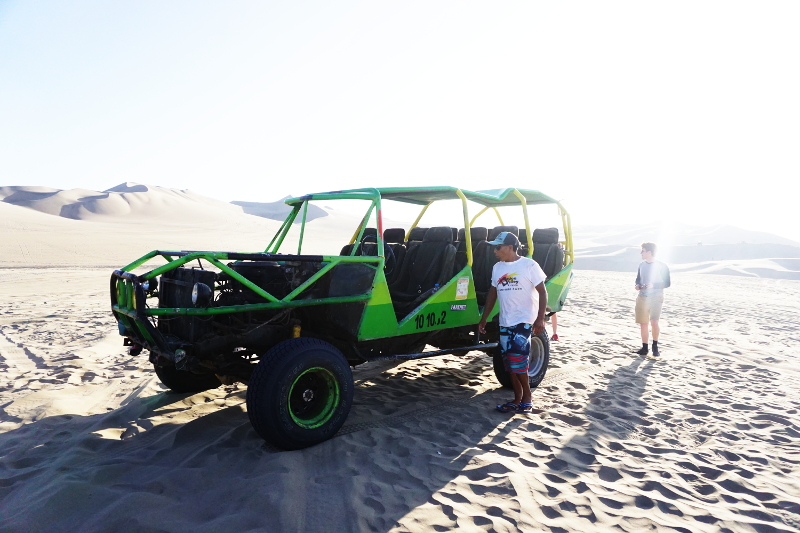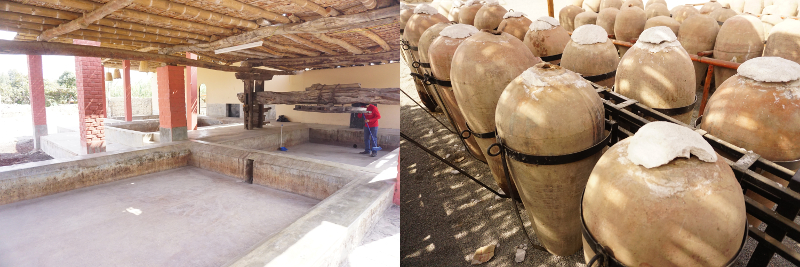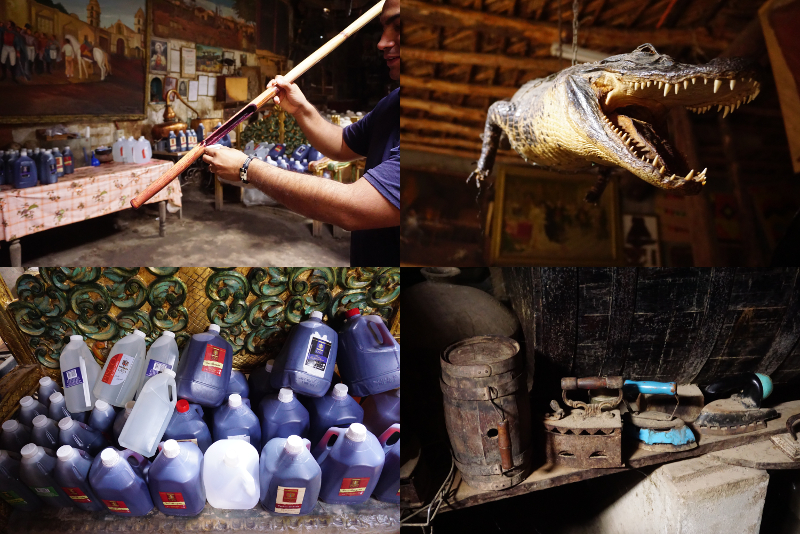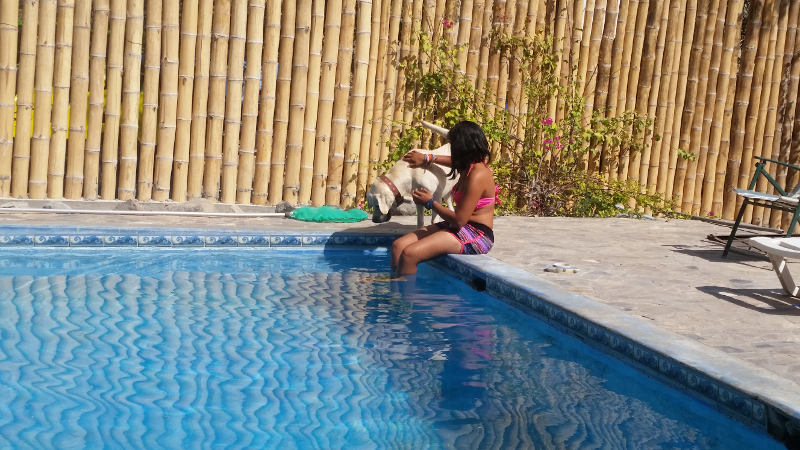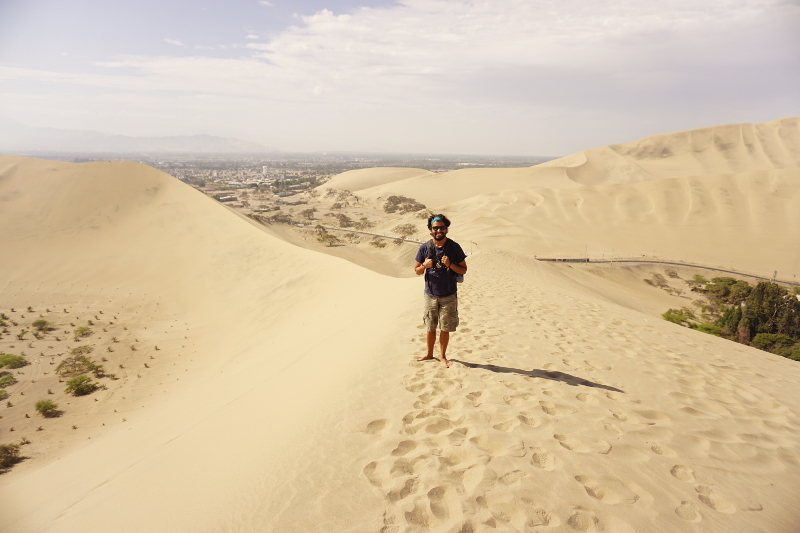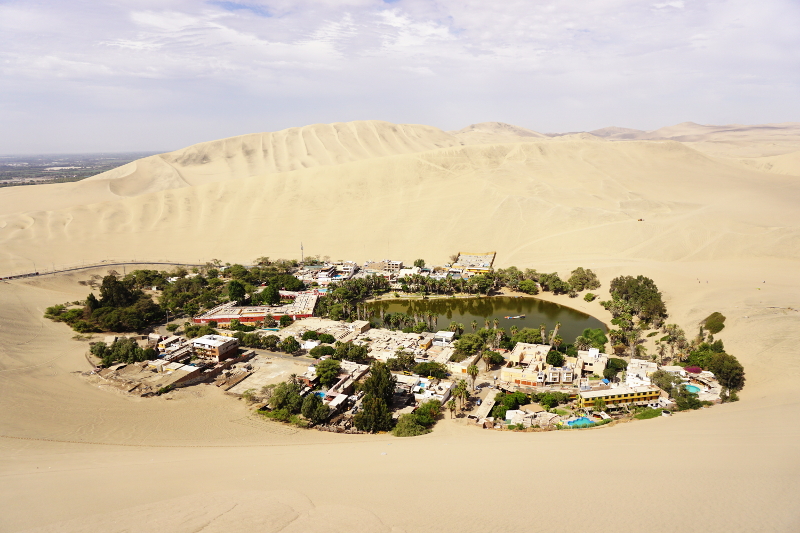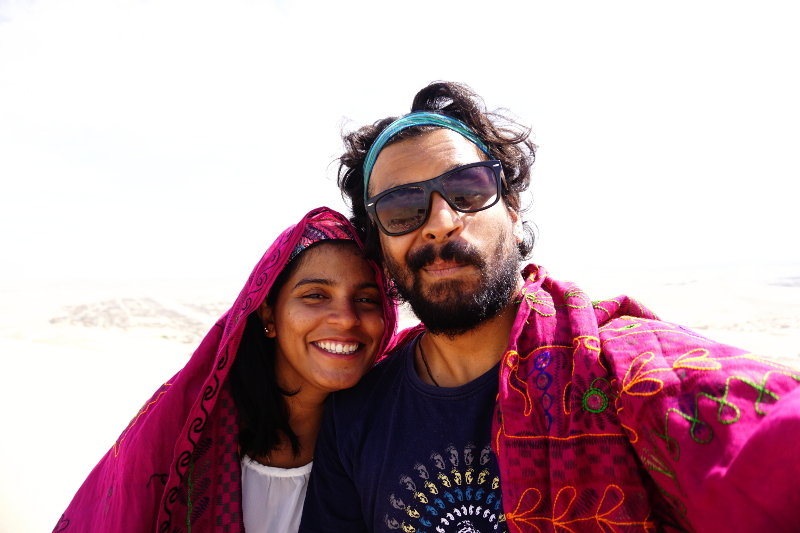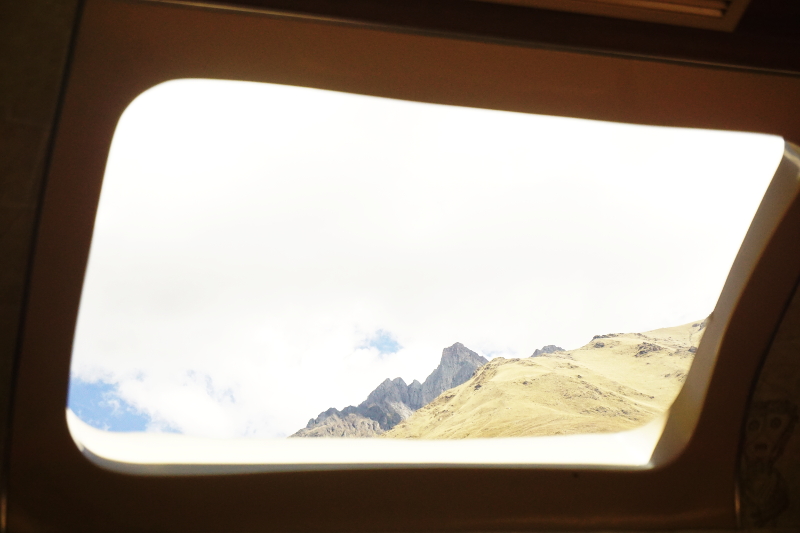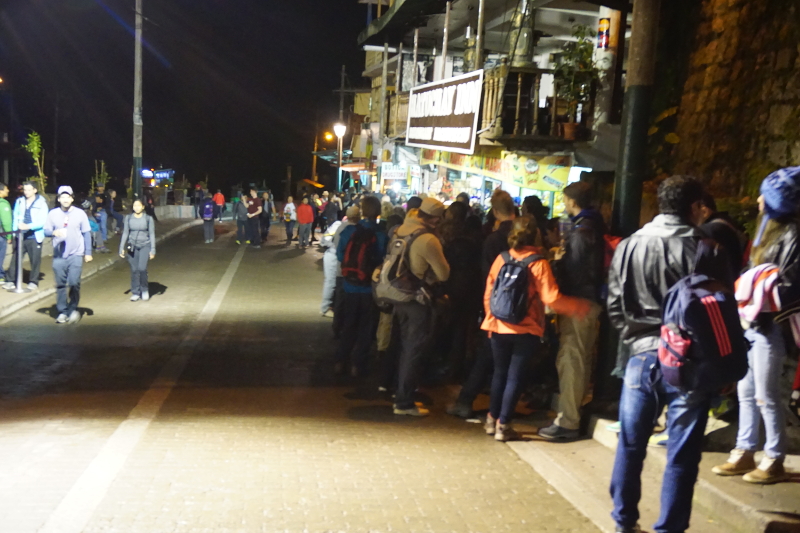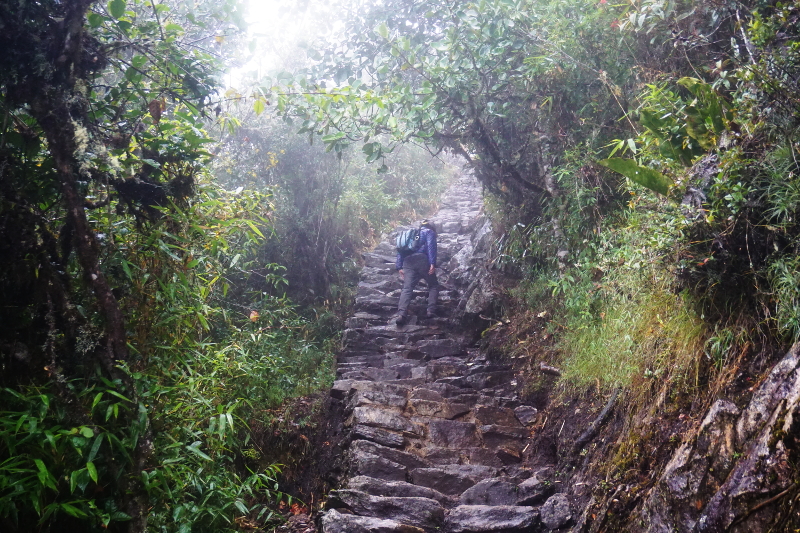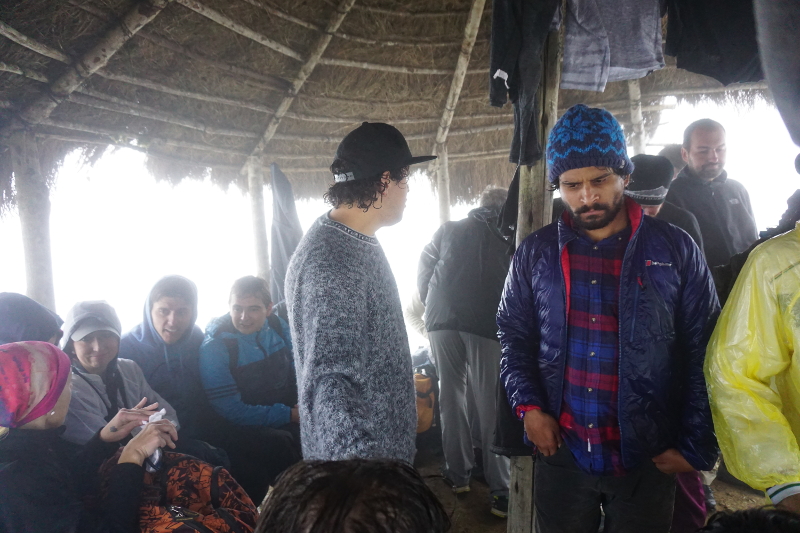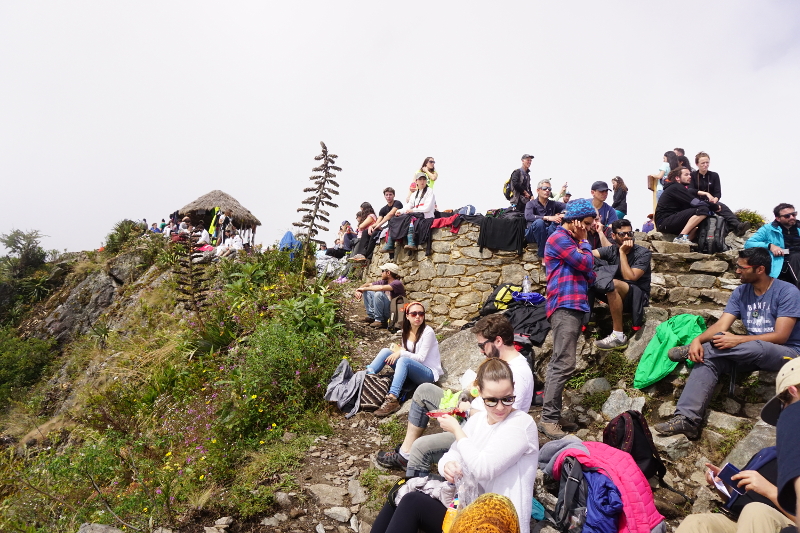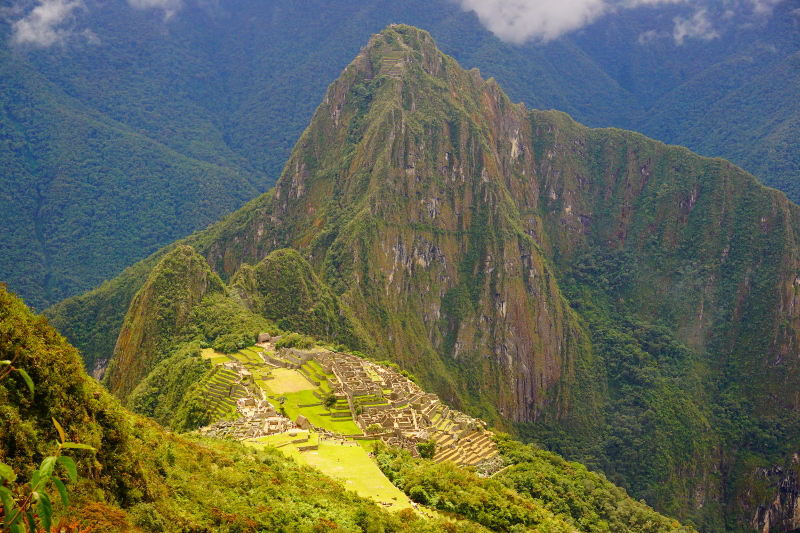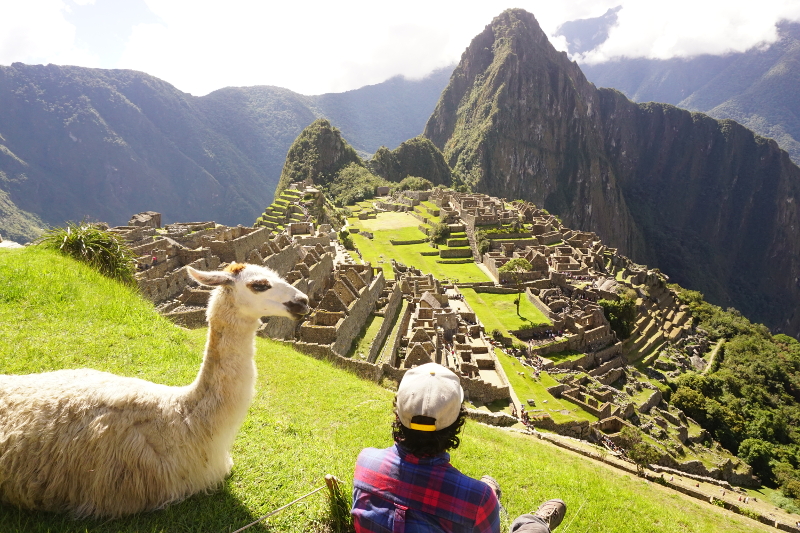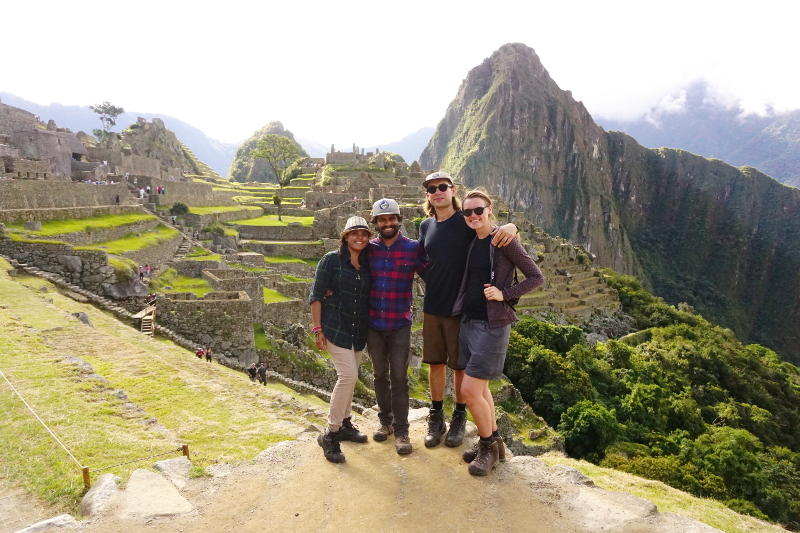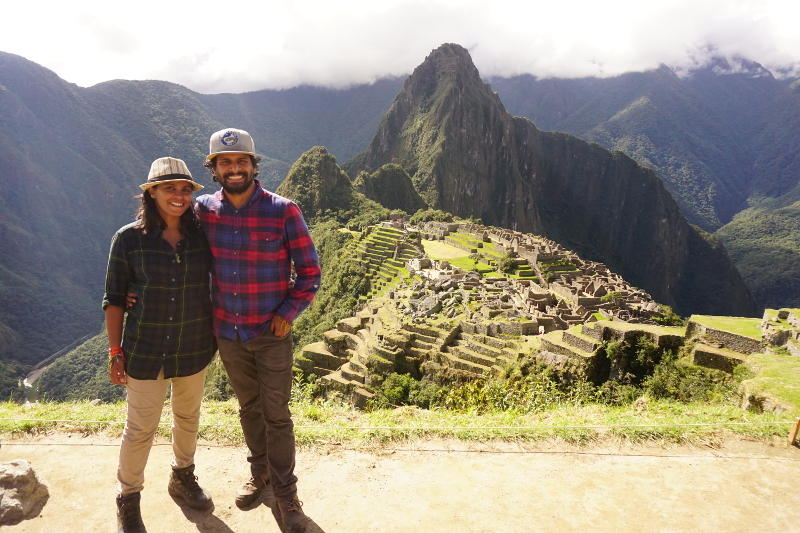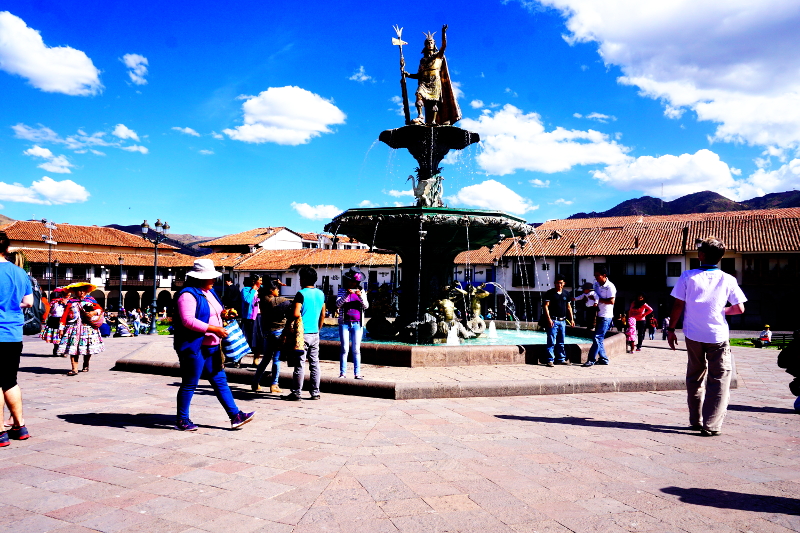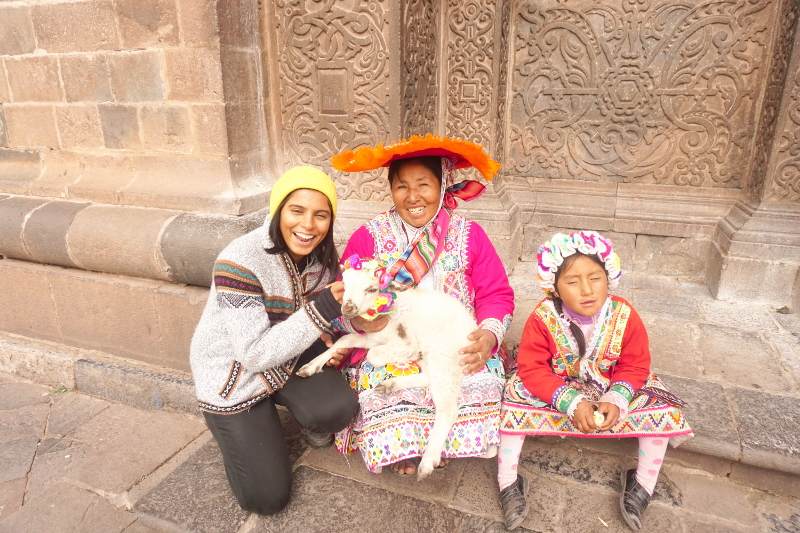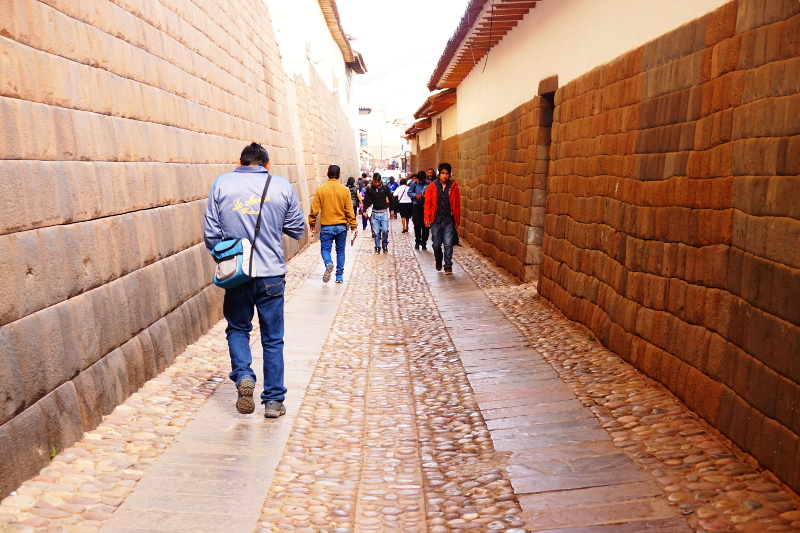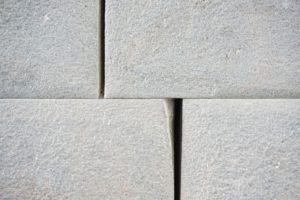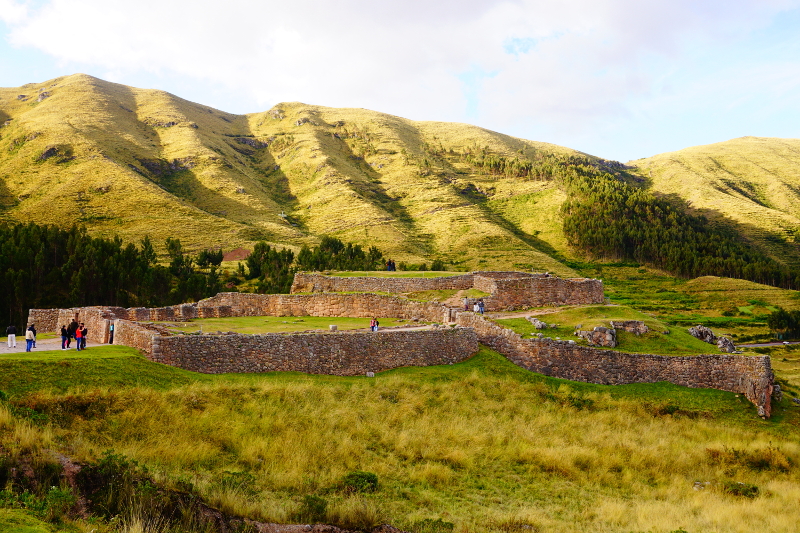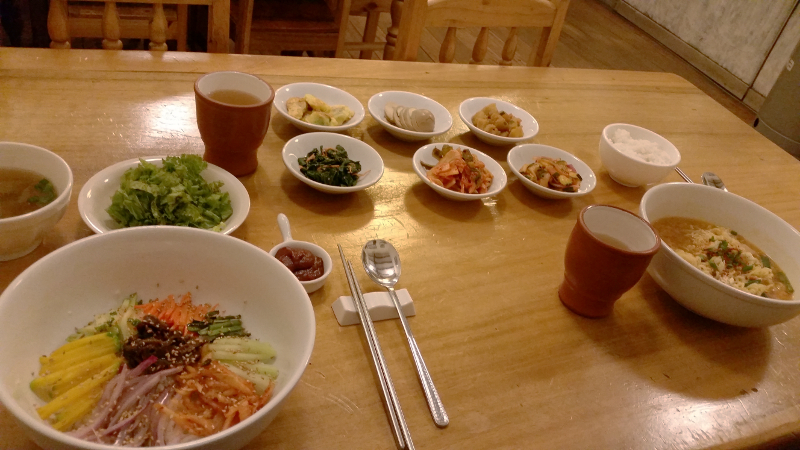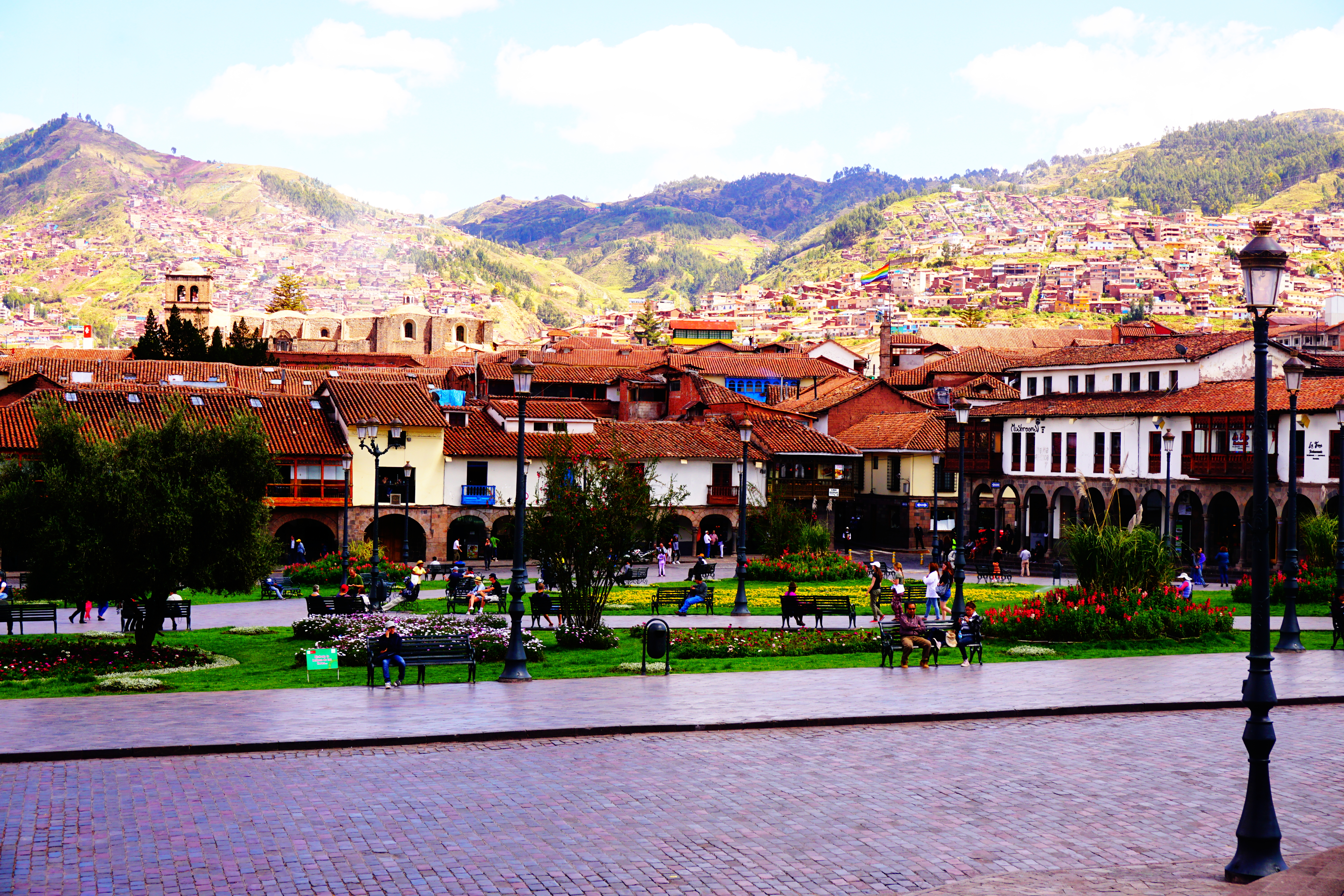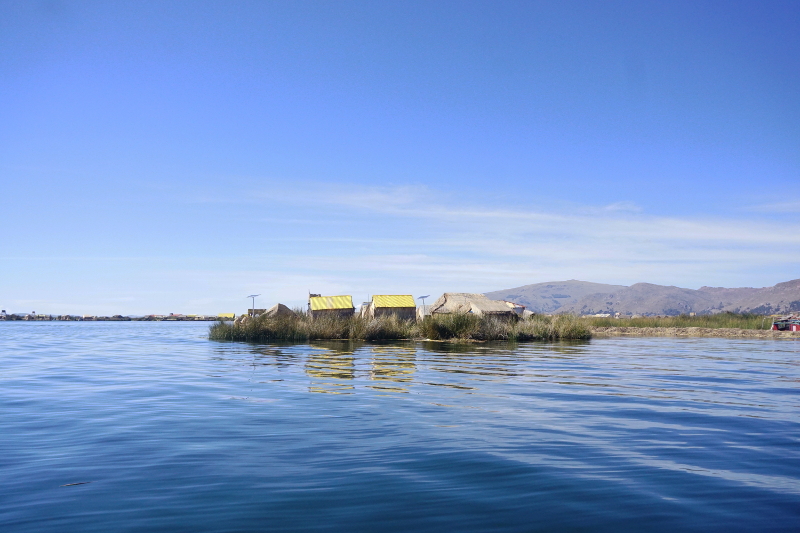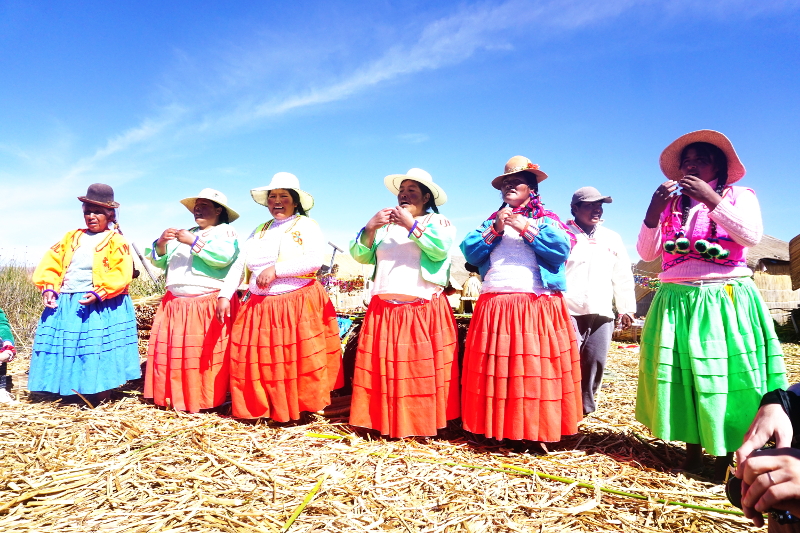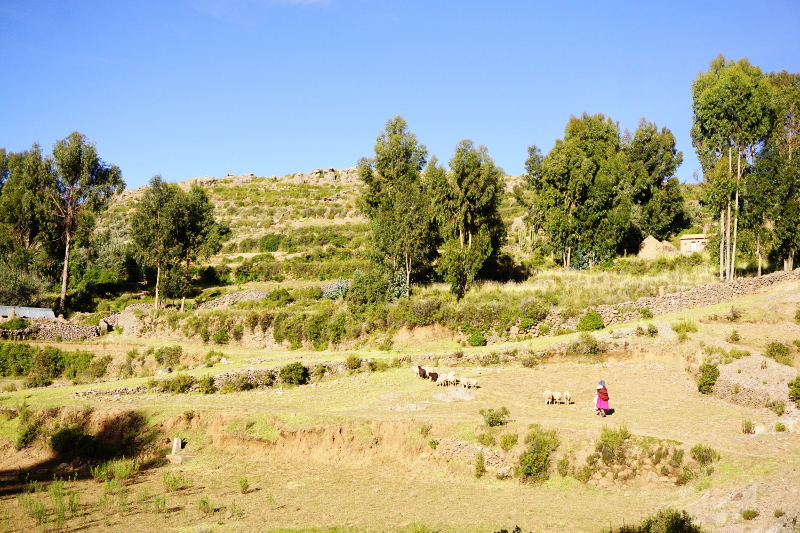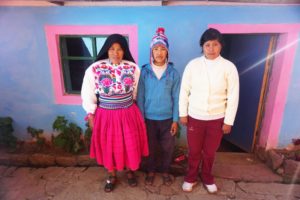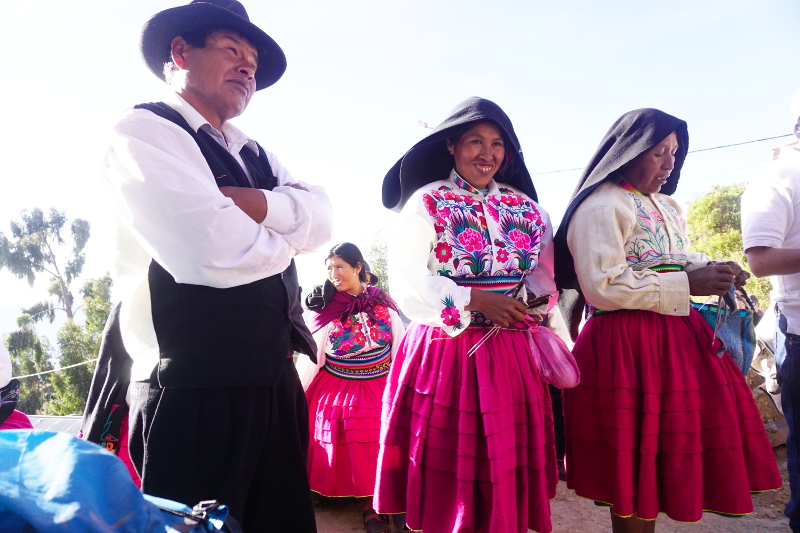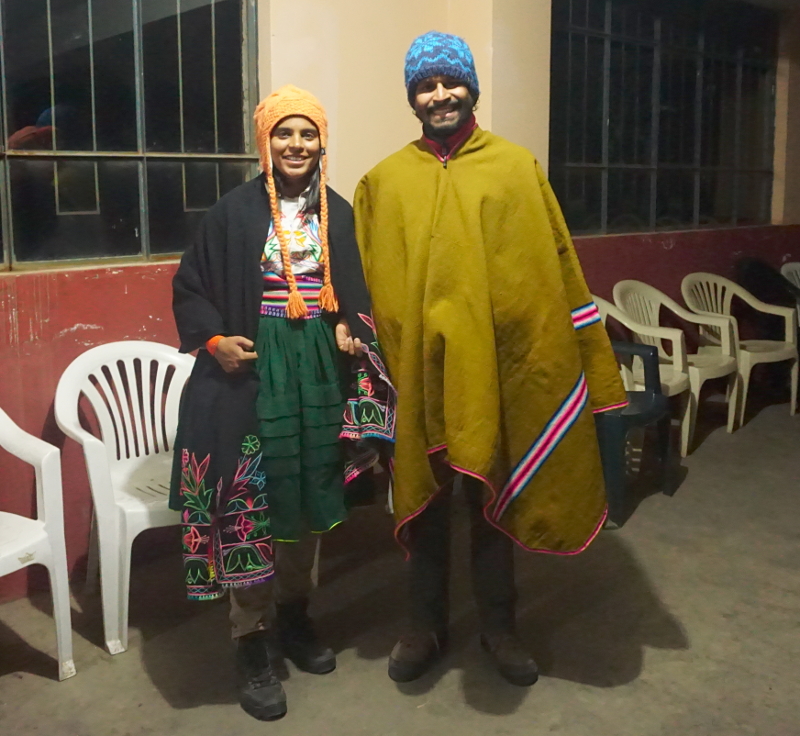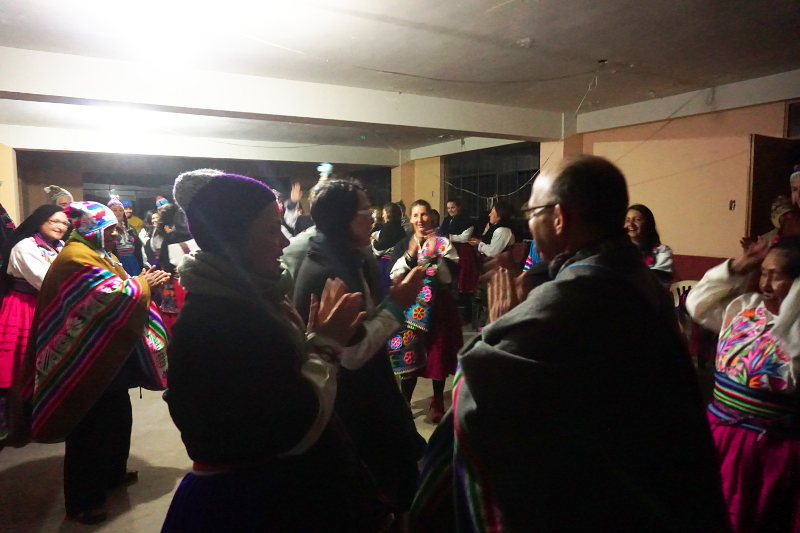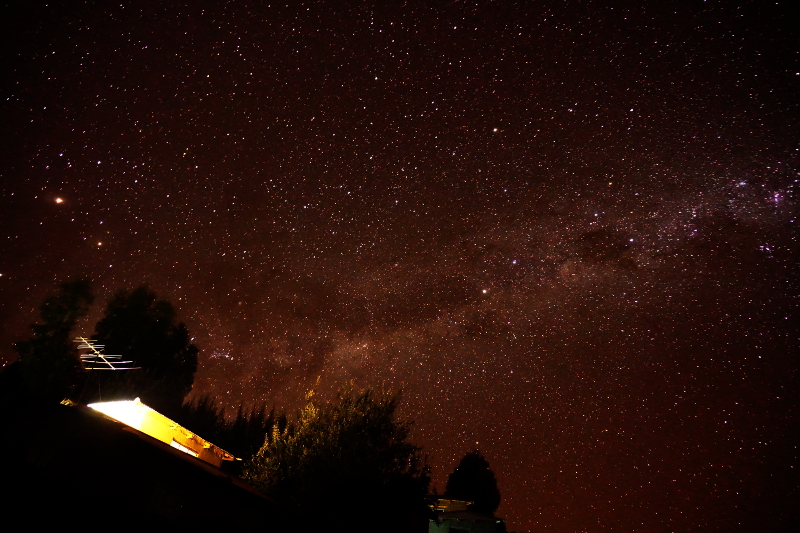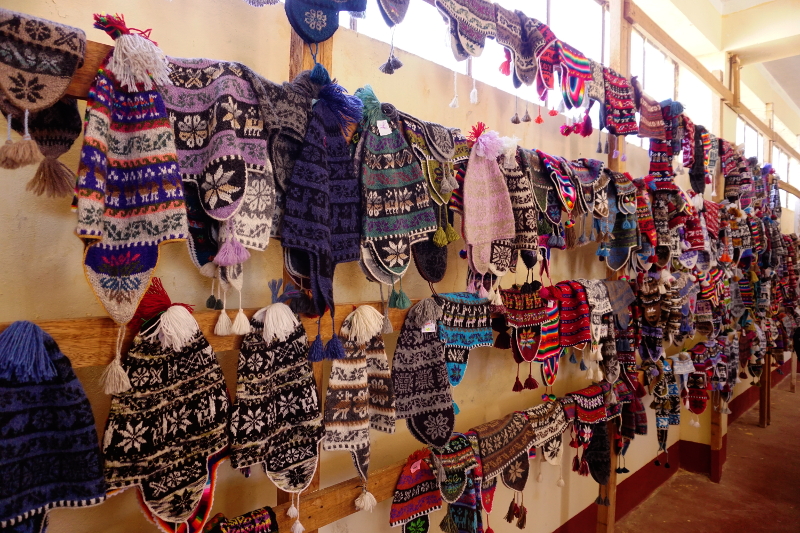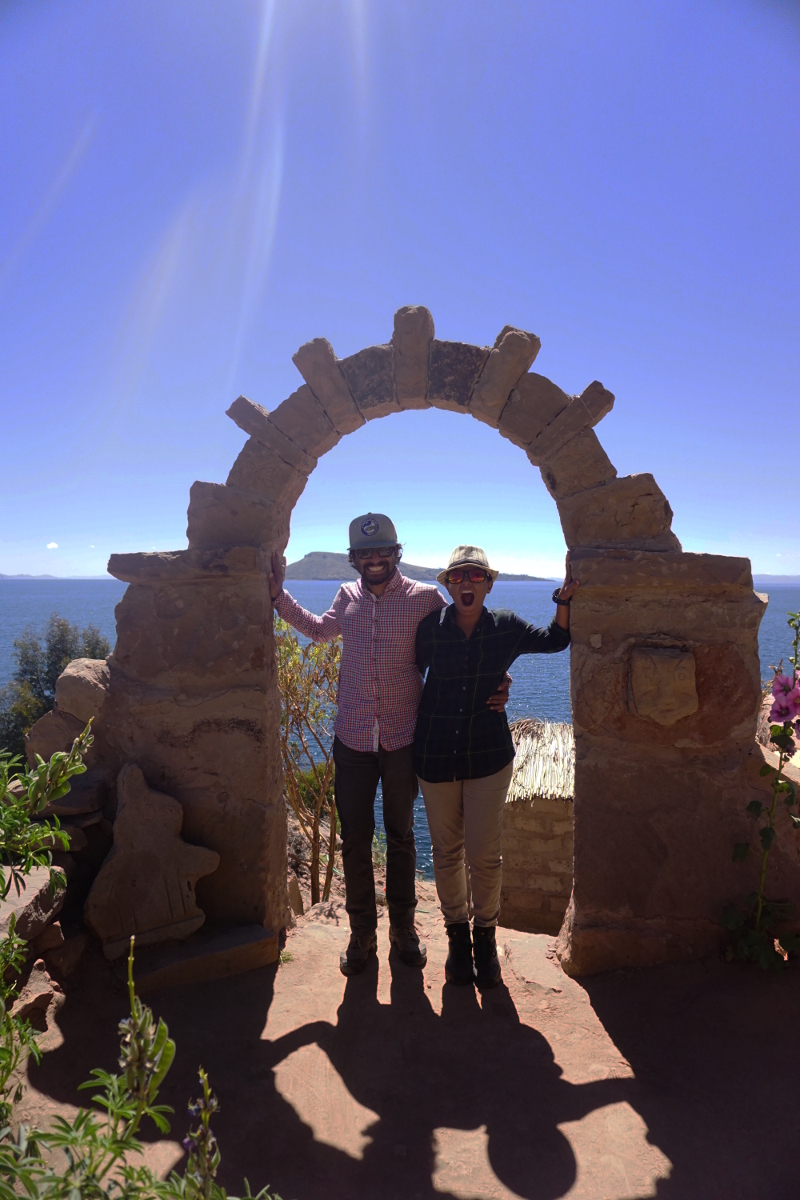Driving from Nevada, we visited Hoover Dam at the state border and suddenly we were an hour behind. Clocks had changed, we think. We actually never managed to figure that out! Anyway, we were finally in Arizona, the land of Canyons! We knew our next leg of the journey, Arizona and Utah, were going to be spectacular but we had to be aware of the time we spent at each stop. Sad to say, we were running out of time.
Grand Canyon
After spending a lonesome night on BLM land, we had 150 miles (240 kms) to go before we were at Grand Canyon. I drove the first 100 miles including the drive down the gravel road. It was an uneventful drive except some deer that decided to jump 20 metres away from the van. Shruti drove the rest of the way and got us to the campsite in the South Rim of the Grand Canyon National Park. Upon arriving, we checked into our pre-booked campsite and went to see the most famous ditch in the world.
The South Rim is home to the rim trail that stretches for miles. The park has a shuttle bus service to view most of it. We took the bus to the Bright Angel Trail Point and as we got off the bus, we were overwhelmed. As far as the eye could see was Grand Canyon. The rim trail was, as the name suggests, a paved path which mostly sticks to the rim. We decided to descend the Bright Angel Trail and then walk along the rim. Descending down the magnificent cliffs was a humbling experience, these rocks have been around longer than us and everything we believe in.
Upon returning to the rim, we saw a Native American Cultural Show at Hopi Point. This was the place where the hopi people would come to trade with white tourists in the early years of the tourist boom. Today, the hopi house stood as a reminder selling native jewelry. The host and his family brought the native culture live, they sang, danced and narrated ancient stories, particularly those belonging to the Navajo tribe. He was a positive man who blew me away by his view of people apologising to him for injustice against Native Americans. “The past was not in our control”, he said. “We are here today, it is our job to share our culture and protect the present for the future generation”. How wise of him!
Rim Trail
We walked along the rim trail all day and saw more amazing places like an old artists studio and identified flat tops that were called temples. These were part of the canyon but overtime they have been carved by wind, rain and river. The pioneers somehow named them after Hindu Gods such as Shiva Temple, Brahma Temple and Vishnu Temple.
 The final place on the first day was the Museum of Geology . This was located along the rim and showed exactly what might have happened over time. The colorado river over millions of years, cut the land like knife cuts butter. The amazing thing is that Grand Canyon is constantly changing. It is different each day. Change is nature! Well we stuck around at the museum to catch the sunset, and all I can say is – I’m glad we did.
The final place on the first day was the Museum of Geology . This was located along the rim and showed exactly what might have happened over time. The colorado river over millions of years, cut the land like knife cuts butter. The amazing thing is that Grand Canyon is constantly changing. It is different each day. Change is nature! Well we stuck around at the museum to catch the sunset, and all I can say is – I’m glad we did.
We were so blown away that we decided to stay another day at Grand Canyon. At checkout time, we asked if we could stay another day. “No!” replied the park ranger, “not at the site you’re on. I have a better place”. We got an even better site! We checked in and then caught a bus to Hermits Point on the West End of the National Park. Once again, the view was overwhelming. Grand Canyon’s might is impossible to describe it. It is 1.8 kms deep, 29 kms wide and 446 kms long. It is incredible 2 days spent in this magical place!
Navajo Nation
A brief view into the Native American Cultural at Grand Canyon got us excited to spend a couple of days in living breathing Native American Nation. We had hardly left the National Park when shacks of Native Americans selling handmade jewelry started appearing on side of roads. Upon crossing the borders of Navajo Nation, we came across a small town of Cameron. It was a trading post dating back to the wild wild west days.
Native Americans still sold jewelry here mostly to tourists going east from the Grand Canyon. We bought some souvenirs and grabbed lunch on the way to our destination, Page, Arizona. We didn’t have any booking for our next stop, Page, and drove into the first RV Park we could find. We asked about the things to do in Page and were told of two things: Antelope Canyons and Horshoe Bend.
Horseshoe Bend
We visited the Horseshoe Bend that evening. It was best seen at sunset and we were there at 6pm. A little early as the sunset wasn’t going to set til 8pm. The carpark was almost full and we knew we were at a good spot. However, nothing could have prepared us for the view of the Horshoe Bend.
The Colorado river turns around a big red rock almost like the end of a hair pin. In reality though, Colorado river has cut through this rock over millions of years. It’s the bend, the cliff over the river at 300 metres in height and the color of the water which makes the location so perfect. We sat at the edge for hours along with lots of fellow travelers. The sunset finally came and the colors changed. A magical view again!
Antelope Canyons
Another spectacular location was Antelope Canyons. We knew nothing about it till the RV Park recommended going for the first tour in the morning. We arrived 7:30am, paid a tribal fee of around $4 per person for entry to premises, got our tickets and soon realised the entire peak operation was owned by the Navajo Tribe. Our guide, a young Navajo girl, took us to the canyon. The canyon was red in colour, like Grand Canyon.
As we went in further into the canyon, it got narrower. It was dark and the growing rays of sun were shining only at the top. What we saw next in another part of the canyon was incredible. Looking through the camera lens, the lack of light and the angle of the rock made the canyon appear blue and pink!
 In total, we walked around 500 metres inside the canyon. Our guide explained how the canyon was made using sand and water. It was scientific but easy to understand. We got it. Definitely an amazing place!
In total, we walked around 500 metres inside the canyon. Our guide explained how the canyon was made using sand and water. It was scientific but easy to understand. We got it. Definitely an amazing place!
The town of Page was a cute little one in the middle of the desert. The major population of the town was brought in to build a smaller dam on the Colorado River. We visited the dam, saw the tours taking place on the lake and watched a documentary to escape the heat. The best part of the town though was Native Americans going around the town speaking their language, following their laws and making us feel like we were in the Wild Wild West!
Decisions Decisions
At this point in the trip, we were inn a dilemma. Number one, we could go east, check out a few national parks and then head towards to San Fransisco. The alternative was to skip everything in the middle and head north to Yellowstone National Park. Having heard so much about it, we couldn’t say No to Yellowstone. The issue was the number of days, mileage limitation and the price of accomodation in San Fran. We killed several birds with one stone by extending our camping trip by 5 days and going to Yellowstone before heading back. YAY to us!
Bryce Canyon National Park
Getting from Page to Yellowstone was a long drive so we decided to break it up. First stop was Bryce Canyon National Park. Though we had extended our trip, we still had to be conscious of miles. The drive from Page to Bryce was 140 miles and that meant we would be over the 100 miles a day mark. Google Maps suggested another way through the BLM lands on unpaved road for more than 40 miles. The area on the border of Arizona and Utah has lots of National Parks and Monuments including Bryce Canyon. Anyhow, we took this road against the advice of an RV driver. The road was very bumpy, almost like the ad for the Aussie Outback. There were some steep hills, sandy stretches and sometimes the dirt road disappeared all together.
The area was incredibly rural until we reached the edge of the National Park. A tiny touristy city was setup given the popularity of Bryce Canyon. We entered the park and got a campsite quickly. The next step was to see the famous amphitheater but before that, we needed maps. Heading to Visitor Center, we got some knowledge about the park, grabbed maps and took the shuttle bus service to Inspiration Point.
Blown Away!
This point of the National Park provided a great view of millions of years old rock formation. The view was not only incredible but unique. Wind, rain and ice had cracked rock and separated it making little towers of rock after years of erosion. The towers were called hoodoo.
After spending some time admiring the view, we walked along the rim to get to Navajo loop trail. We hiked down to the bottom of the canyon and experienced something completely different. There wasn’t much light, less wind, the voices echoed and red sand everywhere!
Ranger Talk & Rainbow Point Tour
That evening we decided to attend a night talk by a ranger. The talk was about the sounds of the canyon. It explained the soundscape, a word I learnt during the talk. The sound of wind hitting trees, the sound of Bryce Canyon Amphitheatre, the sounds at the top of hoodoos and the soundlessness at the bottom. The talk really blew me away.
At some point during our hike, we had asked a ranger about Rainbow Point and he recommended us to book the tour a day prior. The bus tour was an alternate to driving 60 miles. Worked for us! The trip started off with us getting on a bus and driving for 40 minutes to Rainbow Point. The guide, a retiree who lived in the area was extremely funny and witty.
On return, we stopped at various points to enjoy the views and different hoodoo formation. We also saw a few pronghorns, a North American antelope, while on tour. It truly was half a day well spent!
Utah
Driving from Bryce to Yellowstone would be long – around 600 miles (965 kms). That meant it would take us around 2 days. Anyway we started our journey and we’re heading North on Route 15. As we were driving through the middle of Mormon Country, we saw an ad for Hare Krishna Temple around lunch time. Perfect! We made a stopover for some great food and some blessings at Spanish Fork, UT.
Well, probably God wanted to challenge us because 50 miles after the Temple, we had a flat tire on a 10 lane highway in Salt Lake City. I felt the van jerk a little but thought its just the wind. Within seconds a lady in another car pointed out and yelled to us. Shruti waved to the traffic while I moved to the right and came to a halt in the service lane. It was hot and we had never changed the tyre. Luckily, I had asked the guy at the head office where the jack was so I knew where to start.
We got the car manual out and started reading. I lifted the jack, unscrewed the nuts and got the tyre out but the new tyre wouldn’t get in place as the van was too low. We went through this 3 times and eventually got the new tyre on and off we went. We survived!
I was shattered by now in the heat so Shruti had to do some driving. Along the way, we stopped at the local Walmart just outside Ogden to stock up and were blown away by the huge wall of soldiers’ photographs from the local area. We had never seen anything like it. It was real America!
Well all set with food for Yellowstone and Grand Tetons, the main issue still laid ahead of us. We didn’t have a campsite for the night and it was Saturday and past 6pm. Of course we were nervous! Once we arrived at the camping reserver areas, all camps were taken up. We decided to try one anyway and there was a cancellation. Woohoo! We spent the night there and left early the next morning to drive to Grand Tetons. It was all working out!
